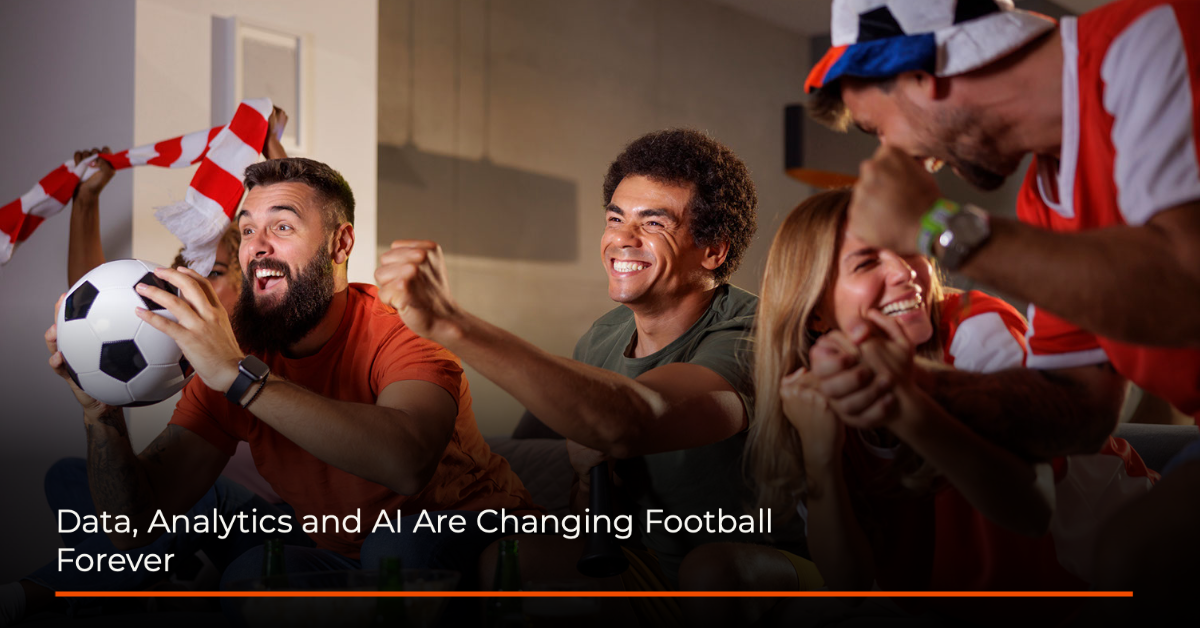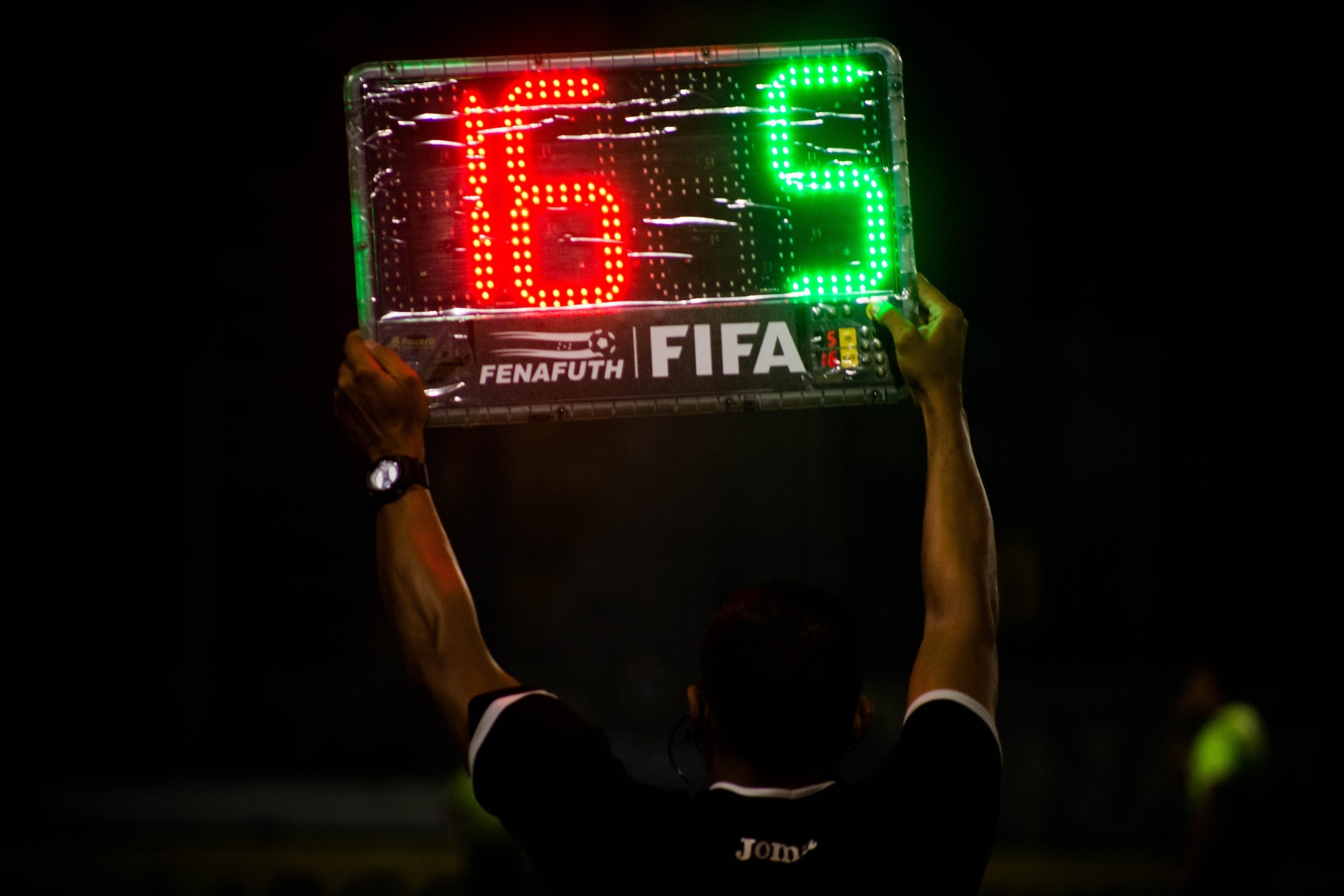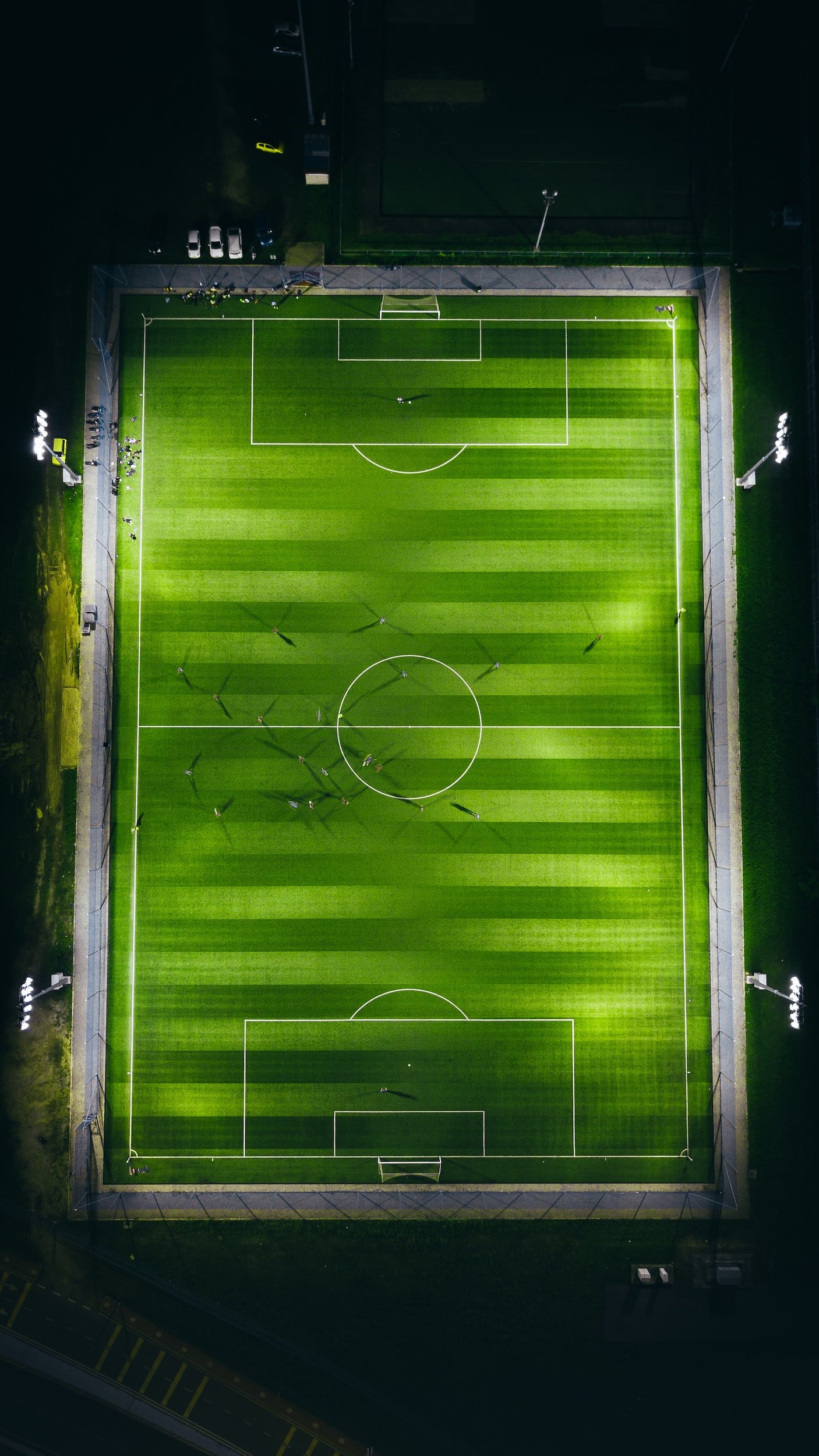Big data and artificial intelligence have already changed our lives in various industries, and now they’re going to change football too. With the World Cup 2022 Qatar Final around the corner, every solution which has impact on the game has a critical importance now. Almost all of these new technologies are based on AI and big data, we can understand the extent of impact AI has on football. From improving player performance to enhancing fan experience, AI and data are revolutionizing football in many ways.
Every tool that is being used has an impact on the football industry in different aspects which improves the overall experience of everyone relevant with the game: referees, coaches, fans, audiences, players and many more.
AI integrated football is improving the football experience
In football world, especially in World Cup 2022, AI-powered cameras, facial recognition and sensors in the ball and stadium are all being used to improve player health and performance, as well as enhance fan experience. Tools that help referees, coaches and players are minimising human-based errors, maximizing the objectiveness without interrupting the excitement of the game. AI and data tools are not only helping during the match, but nearly every process pre-game and post-game such as the training schedules, training and nutrition programs of the players; the content of what should be in the after-game process of a game; player recruitments and talent recruitments.
Now let’s take a look at what these tools are and what are their specific impacts.
Video Assistant Referee & Microchips are the key to the objectiveness
There is a new technology that has been introduced into football: video assistant referees (VAR). This system is first tested in Netherlands in the early 2010s, then first implemented in 2016 for a friendly match between PSV and FC Eindhoven. It helps referees to make the right calls and to give offside or penalty decisions more precisely. VAR was introduced in FIFA World Cups in Russia in 2018, and it is now widely used in many national leagues and international tournaments.
The VAR system used by FIFA 2022 will send real-time signals to the control room of the stadium where a computer will recreate the situation with 3D models, drawing an offside line and determining whether or not a goal should be awarded or not. VARs can review decisions made by match officials on four types of incidents: goals, penalties, red cards or mistaken identity. This improves precision of goals and prevents players from moving the ball after fouls or penalty decisions because of microchips inside balls that provide data concerning their location at any given moment—if they move too far away from where they were when play stopped (i.e., if someone picks up a ball without moving), then it’ll trigger an alert showing how many meters away they are at that time.
AI Semi-automated System analysis & improves a team
The AI semi-automated system uses a sensor in the ball and 12 monitoring cameras placed beneath stadium roofs to detect 29 locations on players’ bodies using machine learning. In other words, nearly every movement in a player’s body can be recorded, analyzed and improved accordingly.
Analysis of the body movements of a player, gaming skills and tactics of a team can be improved which also means that AI can be used to help coaches making decisions.
For example, in World Cup 2022 Qatar, the stadium uses 12 dedicated tracking cameras mounted underneath the roof of the stadium to track the ball and up to 29 data points of each individual player, 50 times per second, calculating their exact position on the pitch. The 29 collected data points include all limbs and extremities that are relevant for making offside calls.
Training methods are also improved by AI
AI’s impact on football stadiums is evident in the way but what about pre-game or post-game impacts? The answer is through virtual reality (VR) or augmented reality (AR).
At FC Bayern Munich, one of the top teams in Germany and in the world, they have developed a VR training application which allows players to train anywhere at any time by wearing VR headsets that make them feel like they are playing on a real field while they run laps around their house.
In addition, for the purpose of a better pre-game preparation by the coaches, stadium infrastructure is getting an upgrade: many stadiums are now equipped with sensors that track things like temperature inside each section of seats, humidity levels on different sides of a pitch (which can affect how fast balls move), and even room temperatures in locker rooms so coaches can better prepare players before games begin.
AI-powered Facial Recognition & Connected Stadium systems benefit everyone
Facial recognition is a natural progression of the technology used to identify players and other employees in stadiums. It’s also used to identify fans and track their behaviour, which means that it can be used for security and crowd control. The use of AI is applied in conjunction with facial recognition, fully automated doors and cameras that will guide security people to avoid collisions between fans. AI will enable technicians to anticipate population surges and quickly address overcrowding by sharing information with security officials.
Also, for the purpose of controlling the crowd in football, “connected stadium” concept has started to being used. This concept includes using temperature analysis in order to predict and control where a problem can occur and prevent it.
Moreover, these systems not only benefit the crowds but in the near future they’ll also benefit the players! In the future, the camera system is expected to be used for recognizing facial expressions during matches so that coaches can assess whether their players are too stressed or tired after long periods on the pitch. If a player’s face shows signs of fatigue or stress, then he or she will be removed from play until they recover mentally – improving their ability to perform at peak levels for longer periods throughout an entire match!
Wearables secure a player’s health
Wearables are small devices that can be worn by a player in order to monitor his health. They are also used to assess their performance and training, as well as their nutrition.
Some of the more popular wearables include vest / tank tops, calf sensors, feet sensors and watches. Players wear these AI tech including clothes for the purpose of recording their health conditions and making changes with the things they do if necessary.
Predicting injuries are no longer a problem with algorithms
AI can be used to predict the risk of injuries and help clubs manage their players’ workloads.
An example is an algorithm developed by Dr. Jan Ekstrand at the Swedish Sports University that uses previous injury data and other factors such as player fitness levels, strength, age and position to predict whether an individual player is likely to sustain a new injury within the next three games.
This algorithm can also be applied in training sessions – it enables coaches or medical staff to identify which areas of play are most likely for players to get injured during exercise routines and allows them to modify their approach accordingly so that more dangerous drills are avoided during certain periods of training where there are high risks of significant strains or sprains taking place (e.g., after a long flight). The system was implemented by Ajax Amsterdam in 2013-14 season; they reported improved results from using this technology (with fewer injuries than predicted), allowing them more flexibility when planning ahead with regards towards rest days between matches or practice sessions without any negative effects on performance during match days themselves.
AI Broadcasting of Games
AI is also being used to improve broadcast technology. AI-powered cameras are able to analyze and predict player movements, allowing them to capture more dynamic footage. Especially for the World Cup 2022 Qatar, 42 cameras, including super slow-motion and ultra slow-motion units, will cover each match which shows how high-level the broadcasting systems have become.
AI tools are being integrated into game balls as well—adding sensors that communicate with devices on players’ shoes or clothing, allowing for real-time monitoring of physical performance and biometric data throughout the match.
Furthermore, broadcasting technology has also been improved by the last technological improvements. In the World Cup 2022 Qatar matches, with the app of FIFA+ an Action Replay characteristic is developed where fans can replay key plays from different angles without needing access equipment such as binoculars – all you need do is point your smartphone camera towards one end of the field and watch as replays play out before your eyes!
AI and new data tools are changing the way football is experienced
To sum it up, it can be easily observed that AI and data solutions have changed the way football is experienced a lot. All processes including the game tactics, recruitment processes, training sessions, referee decisions, injury precautions and many more.
The last and most developed versions of all of these technologies can be observed in the World Cup 2022 which makes this tournament much more exciting and these solutions are expanding their use-cases with other tournaments, professional competitions and even in other sports.
Our consultancy services are designed to help businesses and investors expand their solutions. Metheus Consultancy has the experience and expertise to help you grow your business. Our expansion guides can help you add a wide range of features, functions and services. Let’s discuss your ideas today!










